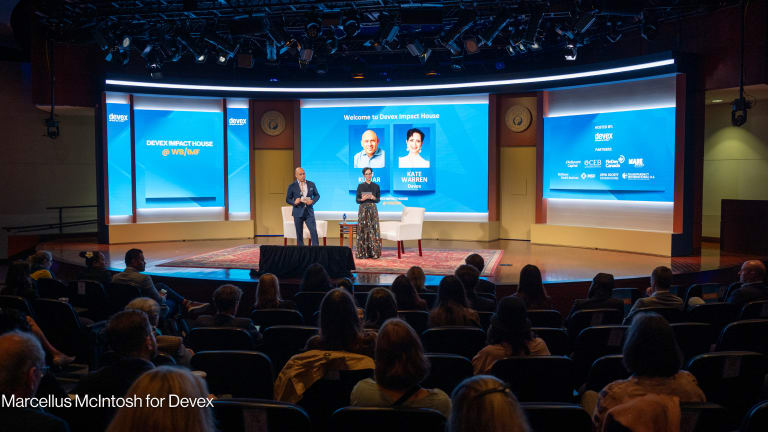
When it comes to public private partnerships, hard data on their impact is still hard to come by, according to a working paper released in March by the Donor Committee for Enterprise Development, a forum for donor and intergovernmental agencies focused on private sector development.
“Despite the high expectations on development outcomes usually associated with such approaches, the evidence on their effectiveness remains elusive, and little has been documented on lessons learnt from experience so far,” wrote Melina Heinrich in the paper, titled Donor partnerships with business for private sector development: What can we learn from experience?
Heinrich, an assistant coordinator of the UK based DCED secretariat, notes that much of the information about partnerships focuses on anticipated impact, and that when results are made available, it is not clear what added value or “additionality” has come from the donor.
“There are virtually no widely available, credibly reported results of donor partnerships with businesses,” writes Heinrich. “Reasons behind this evidence gap are manifold, but all of them are avoidable.”
One of the reasons for this gap in data is how public relations efforts at the time of partnership launch can create “adverse incentives” for regular monitoring and reporting.
Heinrich asserts that impact is often promised when a public private partnership is launched. She quotes from a January 2013 critique by economist David Elliot of the way the UK Department for International Development evaluates challenge funds, a partnership in which a donor awards a grant to a development-focused business initiative.
“Those implicated in selling this have little incentive to come clean and backtrack when reality doesn’t quite match anticipation,” writes Elliott.
For donors looking to pioneer the area of partnership measurement, Heinrich offers the following suggestions: a cultural shift to a “spirit of honest inquiry;” clearly defined objectives and expected results against which later progress can be tracked; sufficient budgets for monitoring; and the creation of a partnerships-specific guide to measurement.
The report also urges donors to recognize the “limitations of commercial interest” in impact measurement. Heinrich highlights a positive example in the measurement systems designed for AusAID’s Enterprise Challenge Fund, which only requests data from companies that have “direct commercial impacts” and regularly collect data.
While the DCED report offers clear recommendations for results measurement, the report does not provide a singular answer for the challenge of measuring the added value, or additionality, a partnership provides.
“Donors feel under increasing pressure to prove that public funds given to private business are actually making a difference and are not paying for something companies would have done or achieved anyway,” observes Heinrich . “In reality, however, deciding on what constitutes additionality is not straightforward, and is arguably among the most challenging questions faced by funders of partnerships.”
Heinrich outlines different ways additionality can be measured, for example an increase in inputs, an expanded scope, or greater development impact. When choosing what types of partnerships to engage in, she advises donors to consider the trade-offs of different partnership models and define for themselves the value they seek.
For example, donors can potentially impact a larger pool of beneficiaries by partnering with larger firms, or they can partner with smaller firms where “input additionality is likely to be higher, but beneficiaries tend to be fewer.” In other cases, donors may seek to maximize results at the expense of any type of additionality, as when donors look only at commercial viability of a project without considering whether it could attract funding elsewhere.
Heinrich stresses the importance of improvement in this area in order to “maximize value” in partnerships.
“Assess[ing] additionality…is critical to maximize value for money of donor-funded partnerships”
Drawing on the experiences of DCED members and a review of relevant literature, the report puts forth other elements which characterize successful partnerships, including strong management skills and support, consistent communication and funding timetables that meet business needs.
Explore related content
Join the 500,000-strong Devex community to network with peers, discover talent and forge new partnerships – it’s free! Then sign up for the Devex Impact newsletter to receive cutting-edge news and analysis every month on the intersection of business and development.








